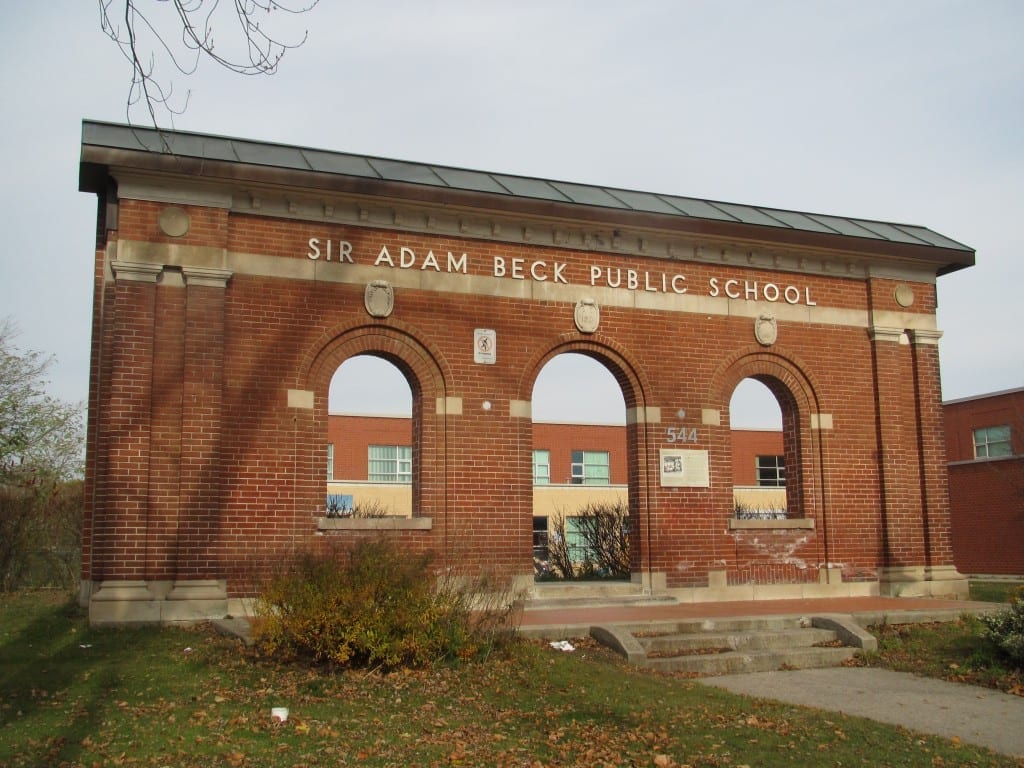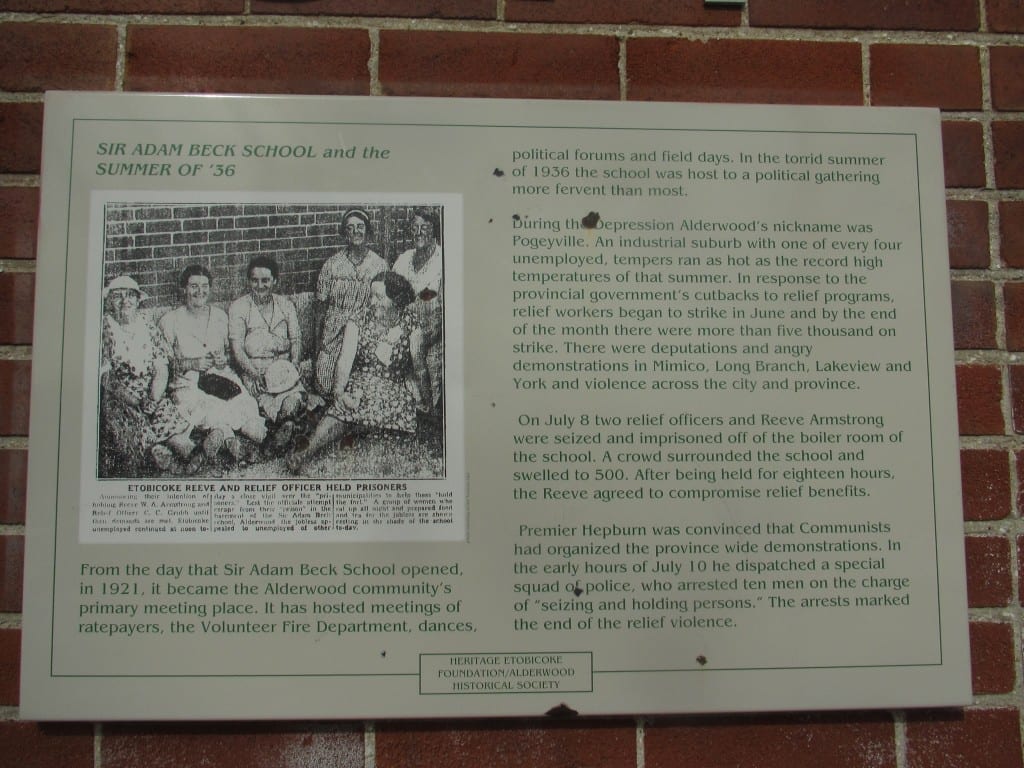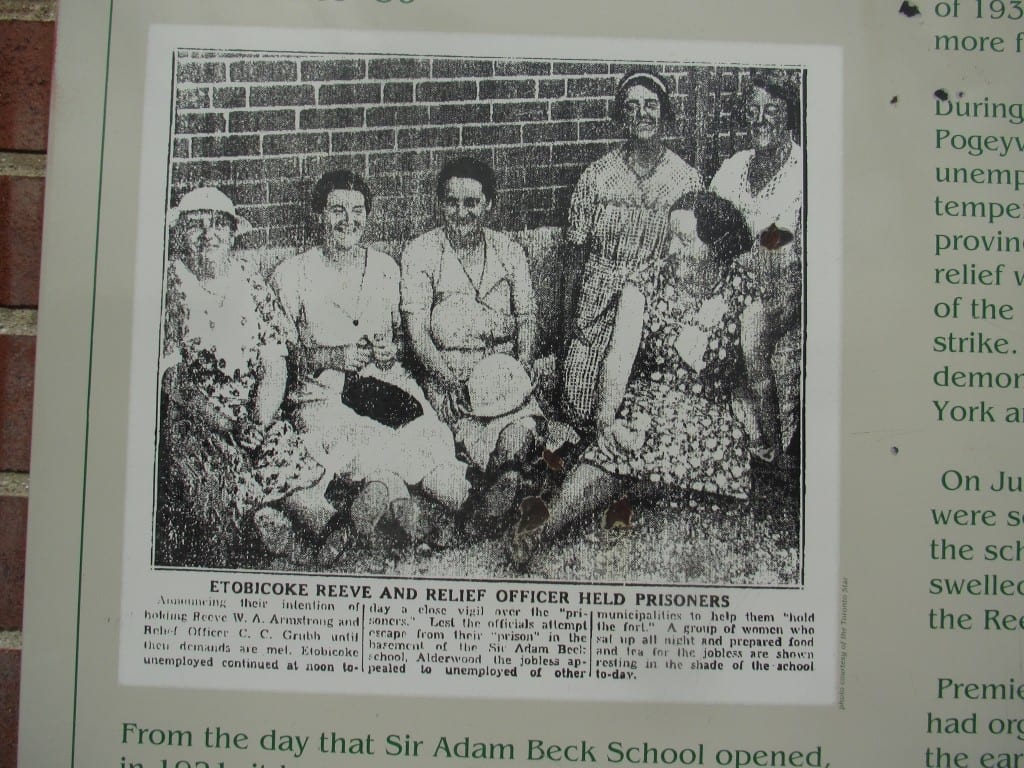Toronto Family History: For King and Country online link (with thanks to Ward 3, TDSB Trustee Pamela Gough)
Ward 3, Toronto District School Board Trustee Pamela Gough <Pamela.Gough@tdsb.on.ca> has shared the following link:
For King and Country — A project to transcribe the war memorials in Toronto schools
A.J. Casson of the Group of Seven was the artist who designed the illuminated lists of Canadian soldiers (former students) displayed in schools, including in Long Branch, featured at the above-noted website.
The site includes an overview of the history of the Long Branch Continuation School. The school was opened in 1914, according to the site. Its alternate or former names include:
School Section No. 12 Etobicoke (Note: S.S. No. 12 originally included the areas later designated S.S. No. 16, and part of S.S. No. 13);
Lakeshore Public School;
Lakeshore Public and Continuation School;
Long Branch Public and Continuation School;
Long Branch Public School;
James S. Bell School
Adam Beck Public School (400 Scarborough Road in Toronto) is also featured, but it’s not the same as another school with a slightly different name, namely Sir Adam Beck School, now called Sir Adam Beck Junior Public School (544 Horner Avenue in Alderwood).
Officials imprisoned in basement of Sir Adam Beck School (July 1936)
When I think about Sir Adam Beck Junior Public School, I’m reminded that the Heritage Etobicoke Foundation and the Alderwood Historical Society some years ago posted a historic plaque on a section of wall (see photo below) retained from the original school building.
We are fortunate that this wall has been preserved at the school site, rather than destroyed, or shipped off to an outdoor museum in Scarborough devoted to the remains of historic Toronto buildings.
The preservation of this wall, on which is mounted a plaque that vividly portrays local history from the 1930s, is in my view an impressive achievement.
The text, which highlights local conditions during the Depression, reads as follows:
“From the day that Sir Adam Beck School opened, in 1921, it became the Alderwood community’s primary meeting place. It has hosted meetings of ratepayers, the Volunteer Fire Department, dances, political forums and field days. In the torrid [adjective: (of the weather) very hot and dry; (of language or actions) emotionally charged; passionate, intense] summer of 1936 the school was host to a political gathering more fervent than most.
“During the Depression Alderwood’s nickname was Pogeyville. An industrial suburb with one of every four unemployed, tempers ran as hot as the record high temperatures of that summer. In response to the provincial government’s cutbacks to relief programs, relief workers began to strike in June and by the end of the month there were more than five thousand on strike. There were deputations and angry demonstrations in Mimico, Long Branch, Lakeview and York and violence across the city and province.
“On July 8 two relief officers and Reeve Armstrong were seized and imprisoned off of the boiler room of the school. A crowd surrounded the school and swelled to 500. After being held for eighteen hours, the Reeve agreed to compromise relief benefits.
“Premier Hepburn was convinced that Communists had organized the province wide demonstrations. In the early hours of July 10 he dispatched a special squad of police, who arrested ten men on the charge of ‘seizing and holding persons.’ The arrests marked the end of the relief violence.”
A caption from the Toronto describes the event
“Announcing their intention of holding Reeve W.A. Armstrong and Relief Officer C.C. Grubb until their demands are met, Etobicoke unemployed continued at noon today a close vigil over the ‘prisoners.’ Lest the officials attempt escape from their ‘prison’ in the basement of Sir Adam Beck School, Alderwood, the jobless appealed to unemployed of other municipalities to help them ‘hold the fort.’ A group of women who sat up all night and prepared food and tea for the jobless are shown resting in the shade of the school today.”
A question that arises: What happened with the second relief officer? If you have located archival evidence that fills out this part of the story, let me know. That will tie up a loose end in the story.
In 1936, Alderwood’s unemployment rate was 25 percent
The unemployment rate of 25 percent in Alderwood in July 1936 is comparable to the unemployment level in Spain in November 2012. The link in the previous sentence refers to photos from the New York Times regarding the current economic crisis in Spain. An accompanying article about the effects of unemployment in that country highlights the story on which the photos are based. A similar report has been published by CBC. Greece also has a 25 percent unemployment rate, for a wide range of reasons.
A March 14, 2013 CBC report indicates that the youth unemployment rate in Greece is 57.8 percent.
A New York Times overview of the economic situation in Europe in 2012 can be found here.
Many variables affect a given community’s profile. The level of employment is not invariably a key determining factor in determining the health and well-being of a given society.
A March 17, 2013 Toronto Star article reports that many young people are leaving Spain in search of work.
A May 7, 2013 Globe and Mail article highlights current unemployment levels in Europe.
The history of the 1930 retains a measure of relevance with regard to current events in Europe and elsewhere. As well, a recent book, Soldaten (2011), offers background regarding the day to day work of soldiers during the Second World War and in other conflicts.
- This section of wall has been preserved from the original Sir Adam Beck School. The plaque refers to Sir Adam Beck School; the name on the wall refers to Sir Adam Beck Public School. Variations in names appear to occur frequently in the history of local schools in Toronto. Jaan Pill photo
Cultural history and the British empire
The title ‘For King and Country’ brings to mind Canadian and world history. The history includes cultural history and the history of the British empire. Peter Burke among others has contributed to our understanding of cultural history.
Historians who’ve added to our understanding of the British empire include Kwasi Kwarteng and David Cannadine. With a focus on Canada, research by Mark Moss and Andrew Theobald is also of interest. At the Preserved Stories website, these topics are addressed under Historiography and Military history.
Update to the King and Country website
Here’s a Nov. 29, 2012 update to the above-noted site.




Leave a Reply
Want to join the discussion?Feel free to contribute!